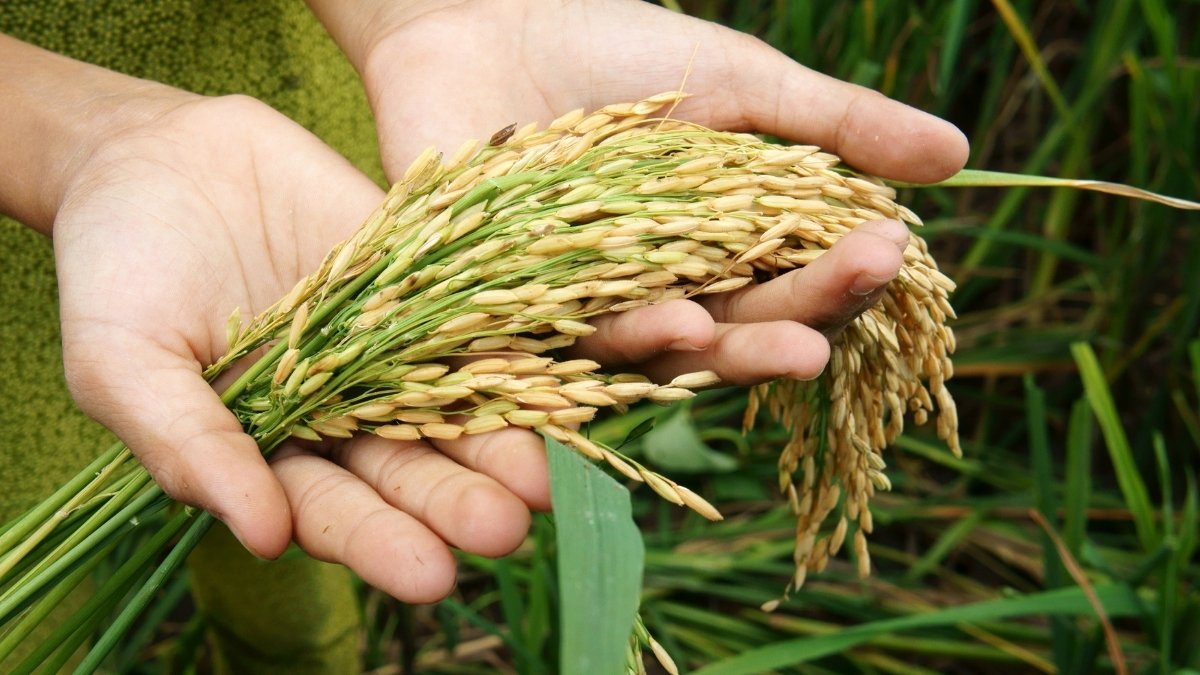Key Points
- Oryza sativa is the scientific name for Asian rice, part of binomial nomenclature.
- Rice originated in ancient China's Pearl River valley and spread across Asia.
- China was the top rice producer in 2024, followed closely by India.
Scientific name of rice: For hundreds of years, people have thought of rice as a common food. But have you ever thought about what rice is called in science? This grain is very useful and is a staple in many cultures and cuisines. It has a two-part scientific name that helps botanists and researchers all over the world classify it.
Knowing the scientific name helps you understand how it fits into the biological classification system and the larger family it belongs to. This system gives scientists a common language that makes things clear and exact. Did you know that Asia grows and eats more than 90% of the world's rice?
What is the Scientific Name of Rice?
Oryza sativa is the scientific name for rice. This name, which is for the common Asian rice species, is part of a system of naming things called binomial nomenclature. Carl Linnaeus came up with this system, which gives each organism a two-part name. The genus name (Oryza) is capitalized, and the species name (sativa) is not. Scientists can easily refer to the same organism no matter where they are using this simple but effective method.

Check Out: What is the Scientific Name for Banana?
What is the Family of Rice?
According to official reports, there are two main types of rice that are grown: Oryza sativa and Oryza glaberrima (African rice). The Poaceae family in science includes both species. This family, which is also called the grass family, includes other important grains like barley, maize, wheat, and millet.
| Species | Scientific Name for Rice | Family |
| Asian Rice | Oryza sativa | Poaceae |
| African Rice | Oryza glaberrima | Poaceae |
Where Did Rice Originate?
People have been growing rice for thousands of years, and evidence points to its origins in the Pearl River valley area of ancient China. From there, it spread all over Asia and became an important part of the culture and diet. Rice is grown all over the world now, but China and India are the two biggest producers. China was still the world's top rice producer in 2024, with India not far behind.
Check Out: What is the Scientific Name for Water?
The Origin of Scientific Names
Using scientific names is important on a global scale because it gives everyone a common language for classifying all living things. Before this system, plants and animals often had more than one common name, which could cause mistakes and confusion.
Carl Linnaeus, a Swedish botanist, came up with the modern system of binomial nomenclature in the 18th century. It gives each species a unique two-part name: the genus, which is a larger group, and the species, which is only for that organism.
This system makes sure that scientists in Brazil and Japan can talk about Oryza sativa and know they are talking about the same plant.
Check Out: What is the Scientific Name of Fish? Check Their Types and Habitat
Oryza sativa is the scientific name for rice. It's more than just a name; it's a way to learn more about the plant's place in the biological world and how it relates to other grasses. Carl Linnaeus set up this standardised naming system to help with research and communication around the world and to avoid confusion. As the world's population grows, rice remains a staple food. It is becoming more and more important to protect its many varieties and related species for future food security.
Comments
All Comments (0)
Join the conversation